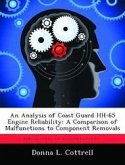On board U.S. Navy, Military Sealift Command and the U.S. Coast Guard vessels, Inspection and Survey routinely conduct inspections. The successful completion of these Inspection and Survey (INSURV) inspections has always been considered a major hurdle. The primary mission of the INSURV inspection is to "assess the material condition of vessels and fitness for further service." INSURV reports have also been used to determine crew effectiveness, ongoing maintenance standards and a crew's ability for self-assessment. As the percentage of failures has increased within the U.S. Navy, the amount of external support provided during the preparation for the INSURV inspection has increased. The external support provided is in the form of extra funds and manpower. Since the inspections are required for U.S. Navy, Military Sealift Command, and U.S. Coast Guard vessels, it begs the question whether this increase in external support is consistent throughout the three services. The external support, during the preparation process for the INSURV inspections onboard U.S. Navy, Military Sealift Command and U.S. Coast Guard vessels negatively affects the original purpose of the inspection. The external support actually hides the problems these services face with diminishing funding and manpower.
Hinweis: Dieser Artikel kann nur an eine deutsche Lieferadresse ausgeliefert werden.
Hinweis: Dieser Artikel kann nur an eine deutsche Lieferadresse ausgeliefert werden.








